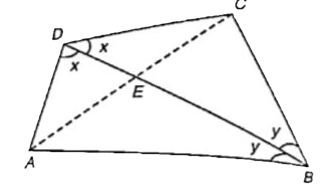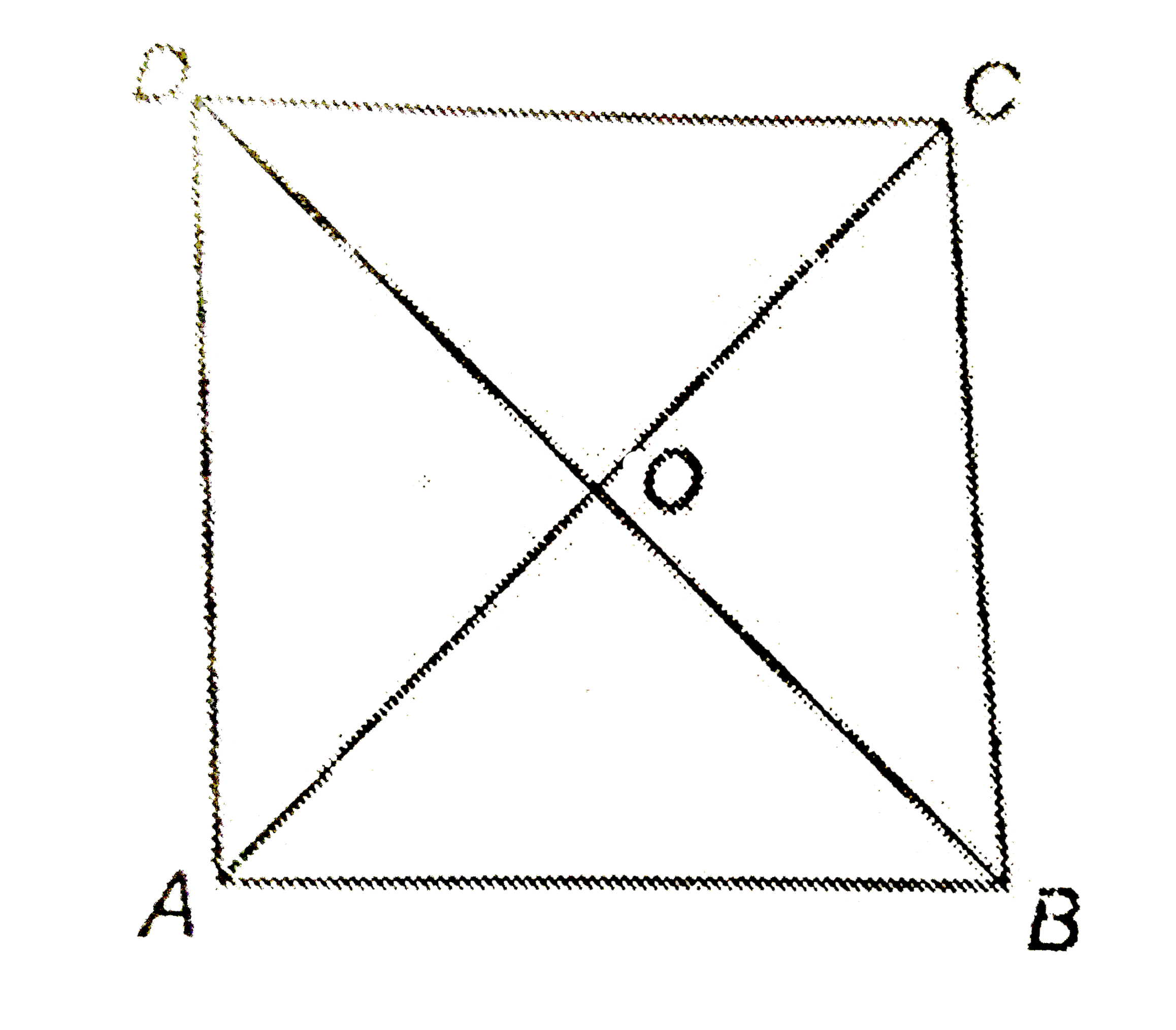If the diagonal BD of a quadrillateral ABCD bisects both ∠Band∠D. Prove that ABBC=ADCD.
To prove that ABBC=ADCD given that the diagonal BD of quadrilateral ABCD bisects both ∠B and ∠D, we can use the Angle Bisector Theorem. Here’s a step-by-step solution:
Step 1: Understand the Given Information
We have a quadrilateral ABCD with diagonal BD that bisects ∠B and ∠D.
Step 2: Apply the Angle Bisector Theorem at Vertex B
According to the Angle Bisector Theorem, if a point D lies on the angle bisector of ∠ABC, then:
ABBC=ADDC
Let’s denote the intersection point of AC and BD as O.
Step 3: Apply the Angle Bisector Theorem at Vertex D
Similarly, since BD also bisects ∠ADC, we can apply the Angle Bisector Theorem again:
ADDC=AOOC
Step 4: Set Up the Equations
From Step 2, we have:
ABBC=AOOC(1)
From Step 3, we have:
ADDC=AOOC(2)
Step 5: Equate the Two Ratios
Since both equations (1) and (2) have the same right-hand side AOOC, we can equate the left-hand sides:
ABBC=ADDC
Step 6: Conclusion
Thus, we have proved that:
ABBC=ADCD
We have a quadrilateral ABCD with diagonal BD that bisects ∠B and ∠D.
According to the Angle Bisector Theorem, if a point D lies on the angle bisector of ∠ABC, then:
ABBC=ADDC
Let’s denote the intersection point of AC and BD as O.
Similarly, since BD also bisects ∠ADC, we can apply the Angle Bisector Theorem again:
ADDC=AOOC
From Step 2, we have:
ABBC=AOOC(1)
From Step 3, we have:
ADDC=AOOC(2)
Since both equations (1) and (2) have the same right-hand side AOOC, we can equate the left-hand sides:
ABBC=ADDC
Thus, we have proved that:
ABBC=ADCD
Topper's Solved these Questions
- BOOK - NAGEEN PRAKASHANCHAPTER - TRIANGLES EXERCISE - Eercise 6b1videos
TRIANGLES
- BOOK - NAGEEN PRAKASHANCHAPTER - TRIANGLES EXERCISE - Exercise 6b25videos
TRIANGLES
- BOOK - NAGEEN PRAKASHANCHAPTER - TRIANGLES EXERCISE - Problems From NCERT/ Exemplar14videos
TRIANGLES
- BOOK - NAGEEN PRAKASHANCHAPTER - STATISTICS EXERCISE - Revision Exercise Long Answer Questions5videos
STATISTICS
- BOOK - NAGEEN PRAKASHANCHAPTER - VOLUME AND SURFACE AREA OF SOLIDSEXERCISE - Revisions Exercise Long Answer Questions5videos
VOLUME AND SURFACE AREA OF SOLIDS
Similar Questions
Knowledge Check
- Question 1 - Select One
The diagonal BD of a quadrilateral ABCD bisects ∠Band∠D, then :
 AABCD=ADBCBADAB=BCCDCABBC=ADCDDAB=AD×BC
AABCD=ADBCBADAB=BCCDCABBC=ADCDDAB=AD×BC - Question 2 - Select One
Diagonals of a quadrilateral ABCD bisect each other. If ∠A=35∘, determine ∠B.
A∠B=145∘B∠B=115∘C∠B=135∘D∠B=125∘
In Figure, diagonal AC of a quadrilateral ABCD bisects the angles A and C . Prove that AB=AD and CB=CD
View SolutionIn the adjoining figure, the diagonals AC and BD of a quadrilateral ABCD intersect point O. Prove that :
AB+BC+CD+DA<2(AC+BD)
 View Solution
View SolutionThe diagonal AC of a quadrilateral ABCD divides it into two triangles of equal areas. Prove that diagonal AC bisects the diagonal BD.
View SolutionIn a quadrilateral ABCD, ∠A+∠D=90∘. Prove that
AC2+BD2=AD2+BC2View SolutionA quadrilateral ABCD is drawn to circumscribe a circle. Prove that AB+CD=AD+BC
View SolutionIf the sides of a quadrilateral ABCD touch a circle prove that
AB+CD=BC+AD.View Solution


